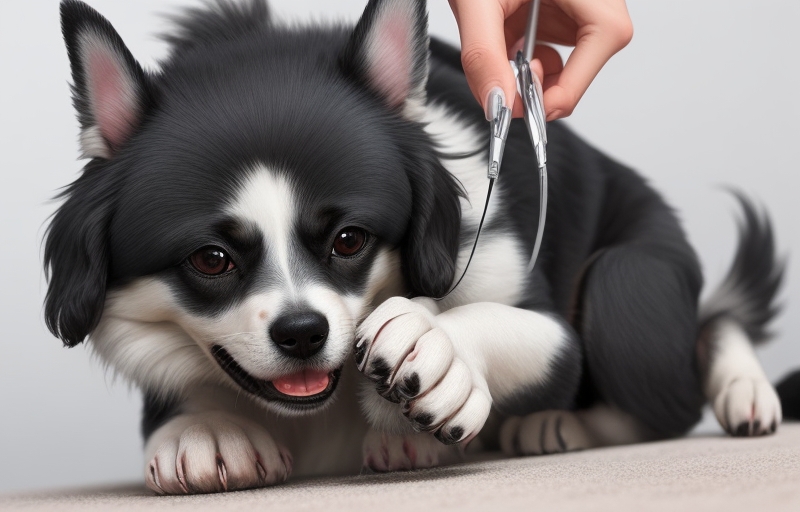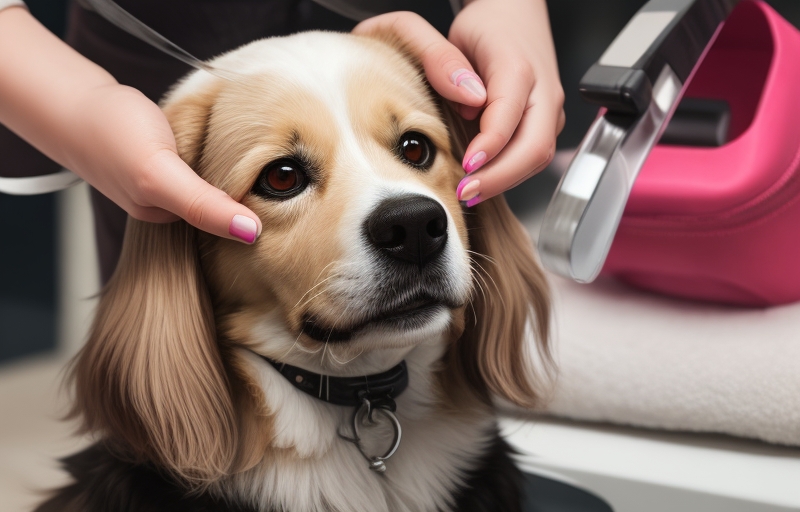Are you wondering about the solution to Common Nail Issues in Dogs? Our furry friends’ health is of utmost importance, and one often overlooked aspect is their nail health. In this guide, we’ll delve into common nail issues in dogs and provide comprehensive insights on addressing them effectively.
Common Nail Issues in Dogs and How to Address Them
Identifying Nail Issues
Dangers of Overgrown Nails
Overgrown nails can lead to discomfort and health issues in dogs. Identifying this issue early is crucial. Watch out for signs such as reluctance to walk or visible curling of the nails. Regular inspections are essential to catch overgrown nails before they become problematic.
Cracked Nails: Causes and Recognition
Understanding the causes of cracked nails is vital. Dogs can experience nail cracks due to trauma or nutritional deficiencies. Recognizing this issue involves observing changes in your dog’s gait or visible splits in the nails. Quick action can prevent further complications.
Infections and Diseases
Nail infections and diseases are not uncommon in dogs. Keep an eye out for signs such as swelling, redness, or discharge around the nails. Understanding common nail diseases helps in early intervention and proper treatment.
Addressing Overgrown Nails

Safe Trimming Techniques
Trimming your dog’s nails can be a daunting task. Learn safe techniques to avoid injury and ensure a stress-free experience for your pet. Familiarize yourself with the proper angles and invest in quality nail clippers designed for dogs.
Tools for Nail Trimming
Choosing the right tools is essential for effective nail care. From traditional clippers to electric grinders, explore options that suit your dog’s comfort and convenience. Having the right tools ensures a smooth nail-trimming process.
Frequency of Nail Trimming
Determining how often to trim your dog’s nails depends on various factors, including breed and activity level. Establish a regular schedule to prevent overgrown nails and maintain optimal paw health.
Dealing with Cracked Nails

Home Remedies for Minor Cracks
Minor nail cracks can often be addressed at home. Learn about safe home remedies, such as using pet-friendly moisturizers or protective nail caps. However, consult your vet for guidance on the best approach for your dog.
When to Consult a Vet
Not all nail issues can be resolved at home. Understanding when to seek professional help is crucial. If you notice persistent pain, bleeding, or signs of infection, consult your veterinarian promptly.
Preventive Measures
Preventing cracked nails involves a combination of diet, exercise, and regular grooming. Ensure your dog receives a balanced diet rich in essential nutrients and establish a routine for paw care.
Managing Infections and Diseases

Recognizing Symptoms Early
Being proactive in recognizing symptoms of nail infections or diseases is vital. Keep an eye out for changes in behavior, persistent limping, or signs of discomfort during paw handling. Early detection allows for timely intervention.
Seeking Professional Veterinary Care
If you suspect an infection or disease, seek professional veterinary care. Your vet can perform tests, prescribe medications, and provide guidance on managing the condition. Prompt treatment is crucial for your dog’s well-being.
Preventive Care Practices
Incorporate preventive care practices into your routine. Regularly clean and inspect your dog’s paws, promote good hygiene, and be mindful of environmental factors that could contribute to nail issues.
Tips for Stress-Free Nail Care
Introducing Nail Care to Puppies
Start nail care routines early in your dog’s life. Introduce puppies to gentle paw handling and positive reinforcement. This sets the foundation for stress-free nail care in adulthood.
Positive Reinforcement Techniques
Make nail care a positive experience for your dog. Use treats, praise, and play to create positive associations with grooming. This not only reduces stress but fosters a stronger bond between you and your furry companion.
Making Nail Trimming a Positive Experience
Approach nail trimming as a bonding activity. Create a calm environment, use soft tones, and take breaks if needed. Making it a positive experience enhances your dog’s trust and cooperation.
Common Mistakes to Avoid

Incorrect Trimming Techniques
Avoid common mistakes, such as trimming nails too short or at the wrong angle. Educate yourself on proper techniques to prevent injuries and ensure a positive nail care experience for your dog.
Ignoring Signs of Nail Issues
Regularly check your dog’s nails for signs of issues. Ignoring subtle changes can lead to more significant problems. Stay vigilant and address any concerns promptly.
Overlooking Preventive Measures
Prevention is key to maintaining healthy nails. Don’t wait for issues to arise before taking action. Incorporate preventive measures into your routine to ensure your dog’s paw health.
Grooming Routine for Healthy Nails

Regular Checkups
Schedule regular checkups with your vet to assess your dog’s overall health, including their nails. Professional guidance ensures you’re on the right track with your grooming routine.
Maintaining a Healthy Diet
A balanced diet contributes to overall paw health. Ensure your dog’s diet includes essential nutrients like biotin, which supports healthy nails. Consult your vet for dietary recommendations.
Exercise and Its Impact on Nail Health
Regular exercise not only benefits your dog’s overall well-being but also aids in maintaining healthy nails. Physical activity helps naturally wear down nails and reduces the risk of overgrowth.
Read Also: Dog Nail Problems You Should Know About
Conclusion
In conclusion, maintaining your dog’s nail health is an integral part of responsible pet ownership. By understanding common nail issues, implementing preventive measures, and addressing issues promptly, you contribute to your furry friend’s overall well-being. For more in-depth guidance, consult your veterinarian.
Frequently Asked Questions
1. How often should I trim my dog’s nails?
Regular nail trimming is typically needed every 4-6 weeks. However, individual factors like breed and activity level play a role. Monitor your dog’s nails and trim as needed.
2. Can I use human nail clippers on my dog?
It’s recommended to use clippers specifically designed for dogs. Human clippers may not provide the right angle and can cause injury. Invest in quality pet grooming tools.
3. What are signs of an infected nail?
Signs include swelling, redness, discharge, and changes in behavior. If you suspect an infection, consult your vet for proper diagnosis and treatment.
4. Are there breed-specific nail care tips?
Yes, different breeds may have varying nail care needs. Larger, more active breeds may require more frequent trimming. Consult your vet for breed-specific advice.
5. How can I make nail trimming less stressful for my dog?
Use positive reinforcement, take it slow, and make it a positive experience. Offer treats, praise, and breaks to ensure your dog associates nail care with positivity.

2 thoughts on “Common Nail Issues in Dogs and How to Address Them”